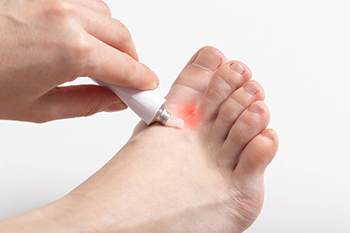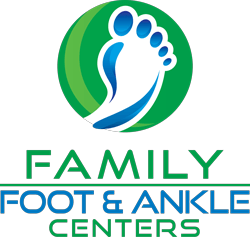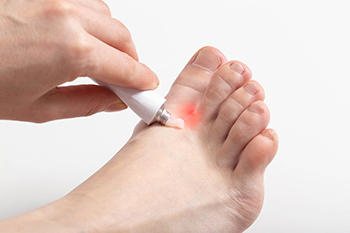Anyone Can Get Athlete’s Foot

The foot condition known as athlete’s foot was originally named as a result of athletes getting this type of fungal infection. Despite this fact, it is common among the general population and can be quite uncomfortable. The fungus that causes this condition lives in warm environments and enters the body through small cracks in the skin. Public swimming pools, shower room floors, and locker rooms are common areas where this fungus is found. The symptoms that many people experience with this ailment include dry skin that becomes red and inflamed, and in severe cases, blisters may develop between the toes. Proper preventive methods consist of washing the feet, followed by drying them completely. Additionally, it is beneficial to wear appropriate shoes, such as flip-flops or water shoes, while in these types of areas. Many people seek expert medical attention that can provide relief, and it is suggested that you confer with a podiatrist who can prescribe the correct medications for athlete’s foot.
Athlete’s Foot
Athlete’s foot is often an uncomfortable condition to experience. Thankfully, podiatrists specialize in treating athlete’s foot and offer the best treatment options. If you have any questions about athlete’s foot, consult with one of our podiatrists from Family Foot & Ankle Centers. Our doctors will assess your condition and provide you with quality treatment.
What Is Athlete’s Foot?
Tinea pedis, more commonly known as athlete’s foot, is a non-serious and common fungal infection of the foot. Athlete’s foot is contagious and can be contracted by touching someone who has it or infected surfaces. The most common places contaminated by it are public showers, locker rooms, and swimming pools. Once contracted, it grows on feet that are left inside moist, dark, and warm shoes and socks.
Prevention
The most effective ways to prevent athlete’s foot include:
- Thoroughly washing and drying feet
- Avoid going barefoot in locker rooms and public showers
- Using shower shoes in public showers
- Wearing socks that allow the feet to breathe
- Changing socks and shoes frequently if you sweat a lot
Symptoms
Athlete’s foot initially occurs as a rash between the toes. However, if left undiagnosed, it can spread to the sides and bottom of the feet, toenails, and if touched by hand, the hands themselves. Symptoms include:
- Redness
- Burning
- Itching
- Scaly and peeling skin
Diagnosis and Treatment
Diagnosis is quick and easy. Skin samples will be taken and either viewed under a microscope or sent to a lab for testing. Sometimes, a podiatrist can diagnose it based on simply looking at it. Once confirmed, treatment options include oral and topical antifungal medications.
If you have any questions, please feel free to contact one of our offices located in Corsicana, Ennis, and Waxahachie, TX . We offer the newest diagnostic and treatment technologies for all your foot care needs.
Read more about How to Deal with Athlete’s Foot
The information provided in this article is not meant to be medical advice and is for educational purposes only. If you would like to learn more about topics related to podiatry, feel free to contact Family Foot & Ankle Centers by clicking here or calling 972-597-4132 to reach our Waxahachie office, 903-872-9910 to reach our Corsicana office, or 972-875-3668 to reach our Ennis office.



